Westinghouse's first robot was "Herbert Televox" built by Roy Wensley out at their East Pittsburgh, Pensilvania plant. Wensley left Westinghouse, but another man of metal was born. Referred to as the son of "Herbert Televox", "Mr. Vocalite", later called "Willie Vocalite" was conceived and designed by Joseph (Barney) M. Barnett, member of the Westinghouse Engineering Department at their plant in Mansfield, Ohio. Barnett became interested in Robots while working in the East Pittsburgh works of the company where he met Wensley, and after being transferred to Mansfield, developed a few of his own ideas in Mr. Vocalite. The robot's name "Vocalite" gives some clues to his improvements, namely now responding to vocal signals, not whistle signals, and light control through the use of photo-electric cells. Let's not forget Rastus and Telelux, constructed by Thomas and Kintner, that also responded to light control, and were fixed to a base, but were not men of metal, but men of rubber, at least externally.
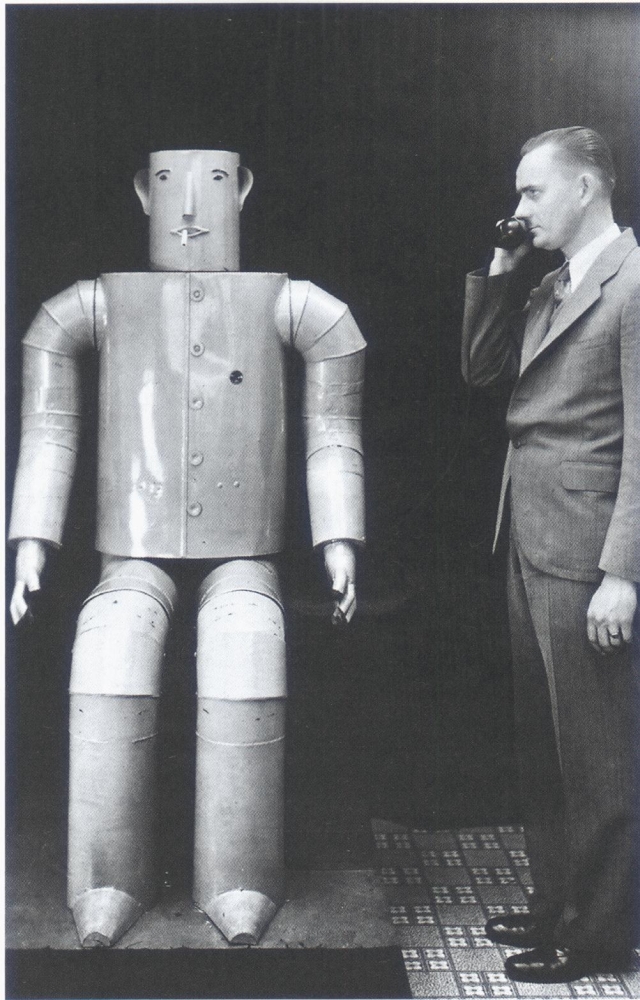
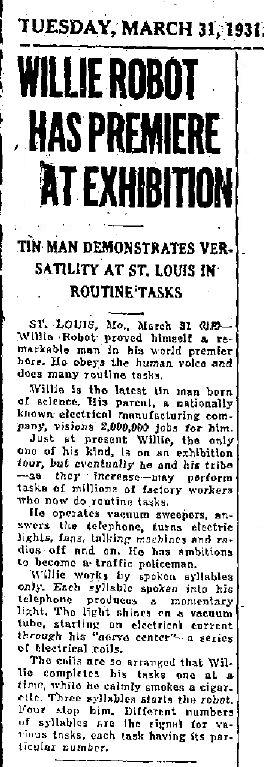
What can Willie do?
In himself, he can rise from a seated position, move either arm independently by rotation at the shoulder, he can be seated again, wink his eyes, and he can smoke cigarettes continuously. Having a "televox' supervisory control unit, he can turn on and off any electrical appliance connected to him. Typically he shows domestic appliances being turned on and off, from vacuum cleaners, electric lights, fans, radios, washing machines, heaters, mix masters, and the like. His eyes are said to glow scarlett in colour.
Other claims are that he can salute, indicating an elbow action, and fire a gun, indicating a finger action. Other than a claim for a 'me too' status, I can see no evidence that Willie fired a gun. Maybe an attachment to the hand was made, or the gun was fired remotely as per the other devices. Certainly the fingers are rigid in all the versions. One image has Willie holding a recipe book, indicating that his wrists could rotate, but most likely not powered.
There are at least two versions of Willie Vocalite, mainly indicated by the number of "buttons" on the front of his suit. The four button suit Willie appears around 1937 when he took an ocean voyage to Hawaii. This version also allows his head to turn for the first time. The third version, now called Willie Westinghouse, has a modern three-button suit! He also has a neck allowing an up and down movement, as well as the sideways movement. His elbows now bend. His fingers are rigid, but there is evidence they were not necessarily rigidly fixed to the palm of the hand.
If adapted with a taste sensor (referred to as "electronyx" in one of the press articles, which is actually a highly sensitive ampere device testing acidity), Willie was also said the be capable of 'tasting' food.
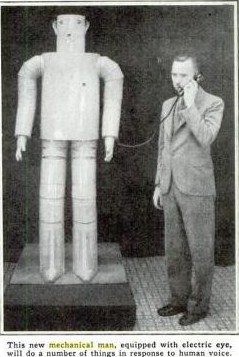
How does Willie work?
As mentioned in his opening premier article above, Willie responds to syllables spoken into a telephone handset. Each syllable momentarily flashes a light source. The light shines on a photo-electric cell, which triggers the grid-glow tube, starting electrical current in his "nerve centre". The current operating relays that perform a particular function. Three syllables starts the robot, four stops him. Each command has to complete before Willie is ready for the next one.
Grid glow tubes also known gas-filled triodes or thyratrons. The tubes are comparable in application to lock-in relays, wherein a small amount of power is used to turn on comparatively large currents from a local source. I will write about these in a separate post.
Most images of Willie Vocalite and Willie Westinghouse show an electronic apparatus next to him. This is essentially the "televox" unit.
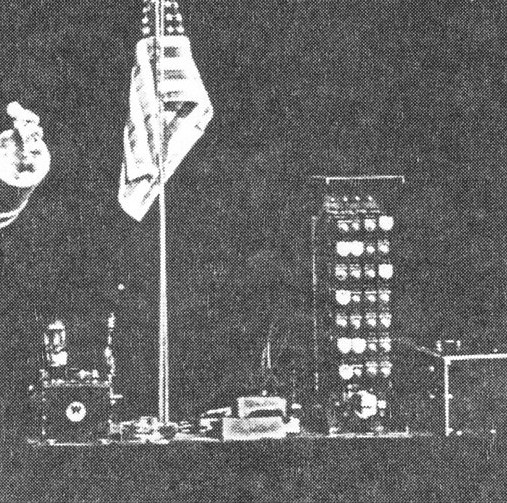
The single tube unit [detailed below] is the grid-glow tube. The rack at the right hand side of the photo is the relay rack. It is basically the same unit out of the portable "Televox" unit, marked in red in the image below.
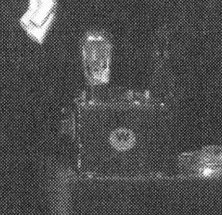
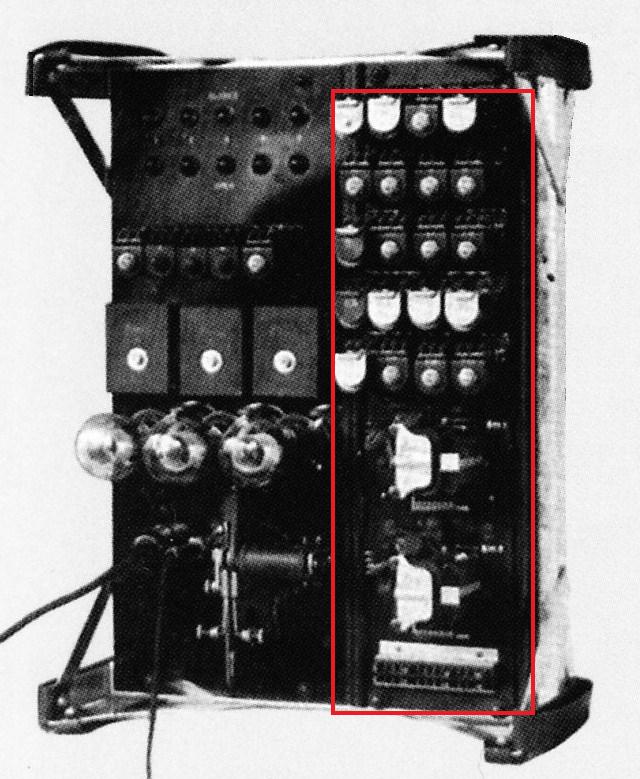
The portable "Televox" unit as used in "Herbert Televox".

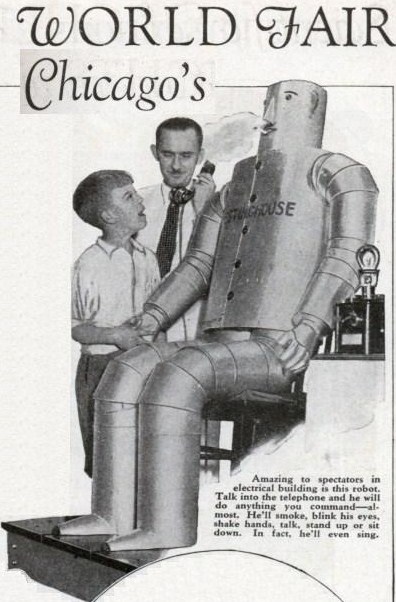
[Note: you can see the single grid-glow tube next to Willie's left arm.]

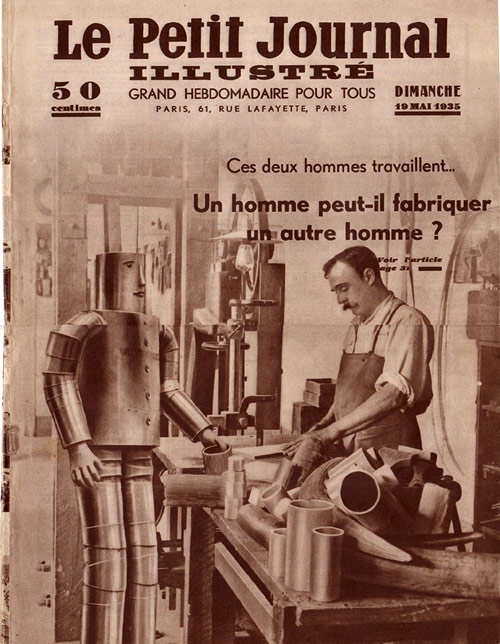
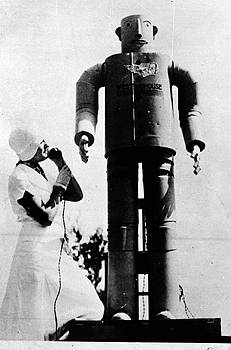

Willie at the Ford trimotor National Air Transport opening ceremony, Newark Airport, 1931.
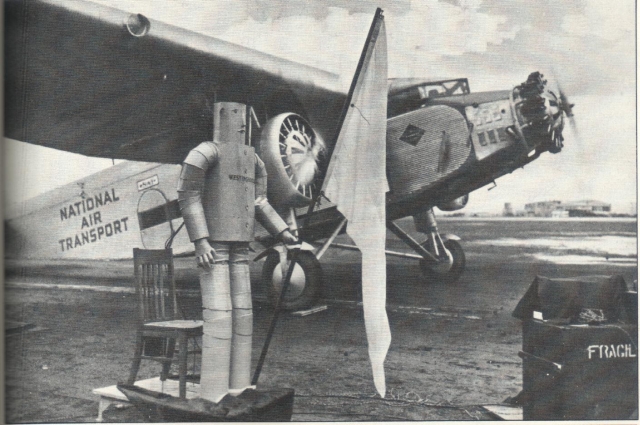
 Willie Westinghouse – 3 button suit, articulated elbow, up and down and sideways movement of head because of neck.
Willie Westinghouse – 3 button suit, articulated elbow, up and down and sideways movement of head because of neck.
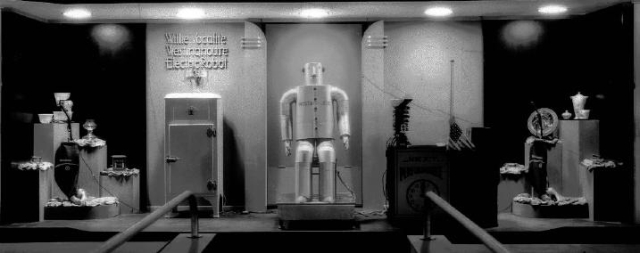
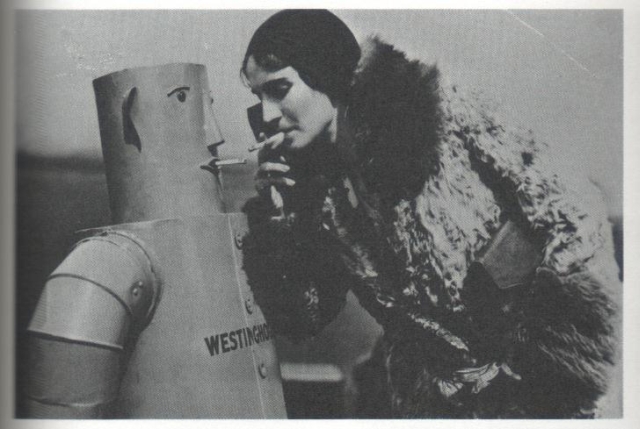
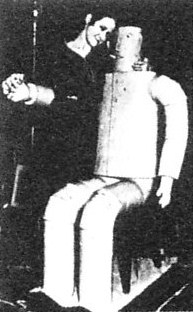
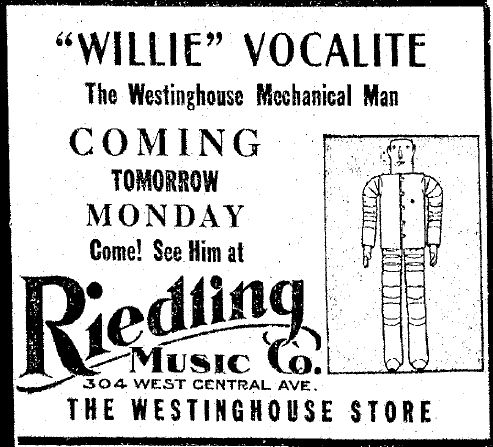
LaCrosseTribuneAndLeader-Press10031935p13WillieVocalite
A glimpse into the future will be presented when "Willie" Vocalite, Westinghouse mechanical man, makes his first appearance in this city. Willie Vocalite has been, called the "scientific marvel" by electrical engineers and scientists all over the United States.
This famous mechanical man will come to this city as the guest of the Food, Home and Flower Show at the Avalon ballroom March 12-14.
As the appearance of this scientific marvel never fails to attract capacity crowds, the management is making every effort to see that every person in this territory who wishes to see the exhibition will get the opportunity.
Willie Vocalite is the latest addition to the already famous family of Westinghouse mechanical men. He is now on tour through the country, displaying his talents to hundreds of thousands of persons who are interested in seeing what steps science is taking to advance the wants of man.
Makes Life Easier
"Willie" is an exemplification of what scientists are accomplishing to make life easier for man. By personifying him through the addition of a body, this mechanical man been made into a figure of popular appeal. When his operator, E. A. King gives "Willie" a command, the huge mechanical man responds immediately.
He sits down, stands up, fires a pistol, raises a flag, talks, smokes, runs a vacuum sweeper, and performs many other interesting tricks. King simply issues the command into a telephone and it is instantly obeyed.
The same system of control that makes "Willie" perform has already been used to turn electric signs on and off by the approach of daylight or nightfall, start and stop motors at predetermined times, control traffic signals, and count various colored moving objects. In addition to the presentation of this scientific achievement, a group of high voltage tricks will be given by Vocalite's operator. A three-inch electric spark will travel along ten feet of wire, eight-inch sparks will be sent from a brass ball and light a Neon tube, and a cotton wick will be lighted simply by the touch of the operator's foot.
Two Years to Develop
Westinghouse engineers say that it took approximately two years to develop Willie Vocalite. The system of photo-electric cells and relays has been made in this figure to give a concrete example of the application of this kind of electric equipment. In appearance "Willie" stands over six feet in height, and weighs approximately 350 pounds. His body is made from pressed steel, which is formed into a girue closely resembling that of Ihe human body. He is mounted on a pedestal, and from that position, does his tricks. A special truck has been made to take this mechanical marvel around the country. Shortly before the first exhibition in this city, the truck will parade through the streets to give the citizens some idea of what they will see when they attend one of the performances.
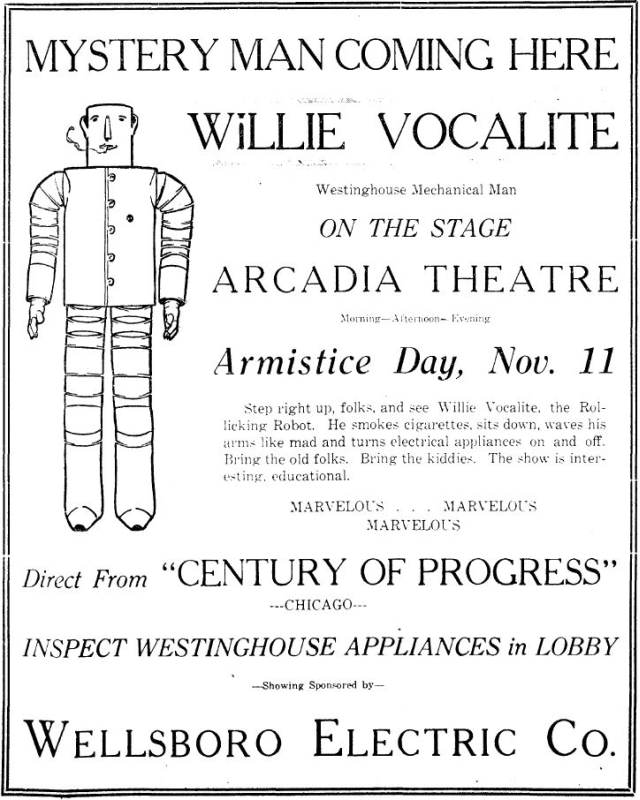
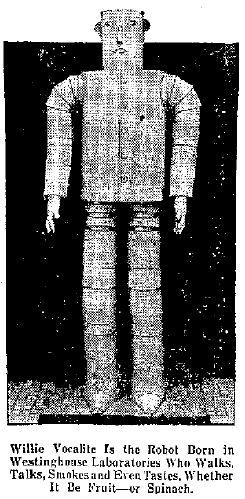
Albuquerque Journal 25 Dec 1938 p22
The imagination of both children and grown-ups is inhabited by many strange creatures. One of the strangest monsters ever described by the pen, the "Golem" of ancient Hebrew transcript, is reproduced by science in the shape of Willie Vocalite, a mechanical robot for the performance of tedious or difficult jobs. Willie talks and acts by means of photo-electric tubes and he tastes foods with an "electrynx" so sensitive that it will record the acidity of fruits to one millionth of an ampere.
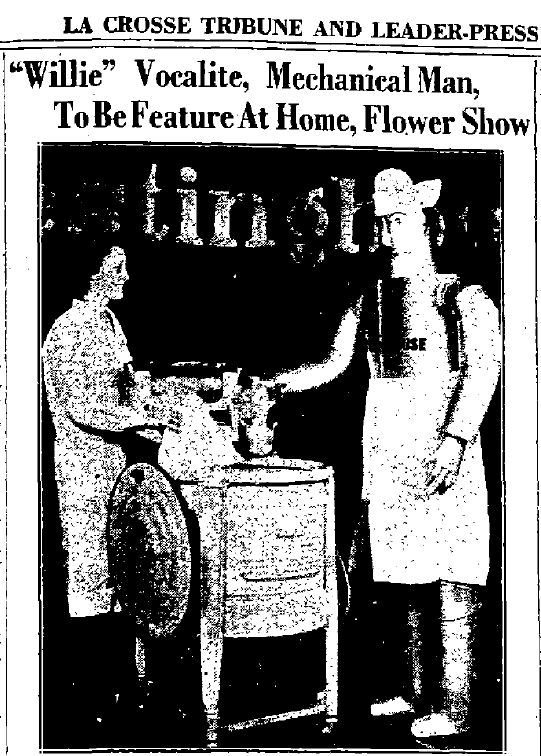

Scott Schaut's excellent book on Westinghouse robots ("Robots of Westinghouse – 1924 – today", 2006) gives a lot of detail and more pics which I wont include in this post.
Well said? Great information, keep up the great work!